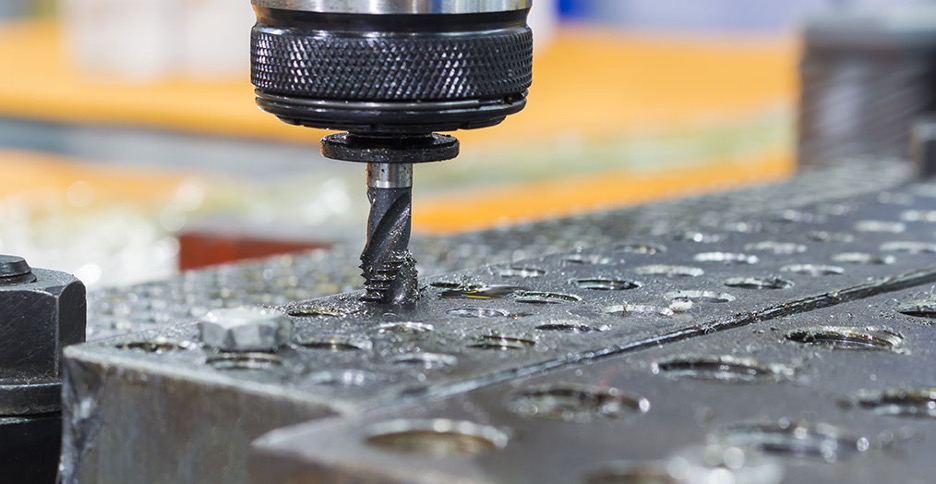A machine tap is the unsung hero of modern manufacturing—the cutting tool that creates the internal threads found in everything from aerospace components to laptop screws. While the concept is simple—cutting helical grooves inside a hole—the science behind reliable, high-quality threads is complex. This guide explores machine taps, covering types, materials, coatings, selection criteria, operating parameters, and troubleshooting tips.
1. Machine Tap Fundamentals
A tap is essentially a hardened, precision-ground screw with flutes that form cutting edges. When driven into a pre-drilled hole, it shears material, leaving behind an exact female thread. Machine taps, unlike hand taps, are designed for use in power-driven equipment such as CNC machining centers, drill presses, and tapping heads. They feature specific flute geometries, shank configurations, and tolerances that withstand higher speeds, feeds, and chip loads.
2. Major Tap Categories
- Spiral-Point (Gun) Taps
• Flutes are straight, but the cutting edges are angled to push chips forward.
• Ideal for through-holes because chips exit ahead of the tap, preventing clogging. - Spiral-Flute Taps
• Helical flutes pull chips up and out of the hole—excellent for blind holes.
• Helix angle (15–45 °) varies by material: higher angles for softer, stringy chips. - Straight-Flute Taps
• Lowest cost and simplest design, used mostly for short, coarse threads in cast iron or non-ferrous materials where chips break easily. - Forming (Roll) Taps
• Displace material rather than cutting it, creating threads by cold-forming.
• Produce no chips, resulting in stronger threads and longer tap life, but require ductile materials (e.g., aluminum, mild steel).
3. Substrates and Hardness
- High-Speed Steel (HSS): General-purpose, economical, good toughness.
- Cobalt HSS (M35, M42): Higher red-hardness for stainless and harder steels.
- Powder-Metallurgy HSS (PM-HSS): Finer grain, superior wear resistance, longer life.
- Carbide: Extreme hardness and wear resistance for abrasive materials or high-volume production, but more brittle and costly.
The choice hinges on workpiece hardness, production volume, and cost targets.
4. Advanced Coatings
- TiN (Titanium Nitride): Gold hue; reduces friction and galling, good for most steels.
- TiCN (Titanium Carbonitride): Blue-grey; harder than TiN, excels in abrasive applications and cast iron.
- TiAlN / AlTiN (Titanium Aluminum Nitride): Dark violet or black; excellent high-heat resistance for hard steels and dry cutting.
- CrN, DLC, or ZrN: Specialty coatings for aluminum or non-ferrous alloys prone to built-up edge.
A proper coating can double or triple tool life and improve surface finish.
5. Selecting the Right Tap
- Hole Type: Choose spiral-point for through-holes, spiral-flute for blind holes, forming taps for chip-free, stronger threads.
- Material: Match substrate and coating to hardness and machinability—cobalt for stainless, TiAlN for high-temp alloys, uncoated HSS or DLC for aluminum.
- Thread Standards: Confirm pitch and class (UNC, UNF, metric, BSP, etc.) plus tolerance (H limits).
- Coolant Path: For deep holes or gummy materials, consider coolant-through taps to evacuate chips and control heat.
- Shank / Drive: Standard straight shank with square, or quick-change systems (DIN, ANSI) for production environments.
6. Tapping Speed and Feed
A rule of thumb: start at 50 % of the cutting speed used for drilling the same material with HSS. For carbide taps or advanced coatings, you can increase to 80–120 %. Feed rate must synchronize with pitch so the tap advances one thread per revolution. CNC controllers typically apply rigid tapping—synchronizing spindle and feed—eliminating the need for floating tap holders in many modern machines.
Lubrication is critical. Sulfur-chlorinated oils offer excellent lubricity for steel, while water-soluble synthetics or mist coolants work for aluminum and cast iron. Forming taps demand high-pressure lubricants because of severe friction during thread deformation.
7. Best Practices for Long Tap Life
- Correct Hole Size: Undersized holes cause excessive torque; oversized holes yield weak threads. Use recommended drill charts—often a letter or number drill rather than fractional.
- Chamfer the Hole: A 60 °–90 ° chamfer guides the tap smoothly, reducing chipping.
- Alignment: Axis of the tap must be perpendicular to the hole; misalignment induces side loads leading to breakage.
- Chip Evacuation: Adopt through-spindle coolant, peck tapping cycles, or air-blast to remove chips in deep or blind holes.
- Torque Monitoring: CNC torque sensors or clutch tapping heads can stop the machine before the tap fractures.
- Tool Wear Inspection: Dulling teeth increase torque and degrade thread quality; replace taps at preset tool-life counters.
8. Troubleshooting Common Problems
| Symptom | Possible Causes | Solutions |
|---|---|---|
| Tap Breakage | Misalignment, undersized hole, insufficient lube | Check fixturing, verify drill size, improve coolant flow |
| Oversize Threads | Worn tap, runout, oversized hole | Replace tap, ensure spindle concentricity, correct drill |
| Poor Surface Finish | Dull tap, wrong speed, inadequate coolant | Use fresh tap, adjust RPM, switch lubricant |
| Chip Packing / Jams | Wrong tap style, low helix angle | Switch to spiral flute or form tap, add chip evacuation cycle |
| Thread Burrs | Incorrect chamfer, excessive feed reversal | Add countersink, tweak spindle decel settings |
